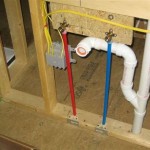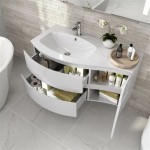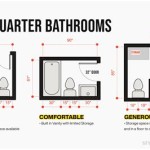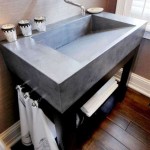How Much Does It To Redo A Bathroom Floor?
Redoing a bathroom floor involves several factors that influence the overall cost. Understanding these elements allows homeowners to budget effectively and make informed decisions. This article will explore the key cost drivers and provide general price ranges to guide bathroom renovation projects.
One of the primary cost considerations is the size of the bathroom. Larger bathrooms require more materials, increasing both material and labor costs. Labor charges are typically calculated by square footage or by the hour. A small bathroom, for instance, might require significantly less tiling than a large master bath, leading to lower overall expenses.
The chosen flooring material significantly impacts the project budget. Options range from budget-friendly vinyl and linoleum to mid-range ceramic and porcelain tiles, and high-end options like natural stone or engineered wood. Material costs are typically calculated per square foot. For example, ceramic tiles might cost between $5 and $15 per square foot, while natural stone could range from $15 to $50 or more per square foot.
Demolition and disposal of the existing flooring contribute to the overall project cost. If the existing floor is complex to remove, such as intricately laid tile or multiple layers of flooring, it will require more labor, increasing the demolition expense. Disposal fees for the old flooring material also add to the project budget.
Subfloor preparation is a crucial step that affects the cost and longevity of the new flooring. If the subfloor is damaged or uneven, it requires repair or replacement before the new flooring can be installed. This might involve replacing sections of the subfloor, leveling the surface, or applying a moisture barrier. These additional steps add to the overall labor and material costs.
Installation complexity plays a significant role in determining labor costs. Intricate tile patterns, custom designs, or the installation of specialized materials require more skilled labor and time, leading to higher installation expenses. Standard tile layouts are typically less expensive to install than complex mosaics or custom designs.
Labor costs vary depending on the geographical location and the experience level of the contractor. Labor rates in metropolitan areas tend to be higher than in rural regions. Highly experienced contractors with specialized skills might charge higher rates than general contractors. Obtaining multiple quotes from different contractors is advisable to compare pricing and services.
Additional materials, beyond the flooring itself, contribute to the total cost. These include underlayment, adhesives, grout, sealants, and transition strips. The type and quality of these materials can affect both the project cost and the final result. Choosing high-quality materials may increase the upfront cost but can contribute to the longevity and durability of the new floor.
Geographic location significantly influences overall project costs. Material prices and labor rates can vary considerably between different regions. Areas with higher living costs generally have higher renovation expenses. Researching local market prices provides a more accurate estimate for a specific location.
Accessibility of the bathroom can also affect the project cost. If the bathroom is located in a difficult-to-access area of the house, it might increase the time and effort required for material transportation and installation, leading to higher labor charges.
Unforeseen issues, such as plumbing problems or unexpected subfloor damage, can arise during the renovation process. It's essential to have a contingency fund to cover these potential additional expenses. A contingency of 10-20% of the estimated project cost is generally recommended to address unforeseen circumstances.
Seeking professional estimates is crucial for accurate budgeting. Contacting multiple reputable contractors and providing them with detailed project specifications allows for comparative analysis of pricing and services. Clear communication with contractors regarding the desired materials and design ensures accurate and comparable quotes.
Considering factors like bathroom size, material choice, demolition, subfloor preparation, installation complexity, labor costs, additional materials, geographic location, accessibility, and potential unforeseen issues provides a comprehensive understanding of the cost involved in redoing a bathroom floor. This knowledge empowers homeowners to plan effectively and make informed decisions throughout the renovation process.
Budgeting effectively requires careful consideration of all associated costs. Creating a detailed budget that includes material costs, labor charges, and a contingency fund helps manage expenses and avoid overspending. Regularly reviewing and updating the budget throughout the project ensures that the renovation stays on track financially.

Average Cost To Remodel A Bathroom In 2024 Badeloft Usa

How Much Does A Bathroom Remodel Cost 2024 Data Angi

Bathroom Remodel Cost Calculator 2024 S Modernize

2024 Bathroom Remodel Cost Average Renovation Redo Estimator

Bathroom Renovation Cost How Much To Budget For A Remodel

The True Cost Of Remodeling Your Bathroom Tile And All

How Much Does Bathroom Remodeling Cost In Ct Post

Bathroom Remodeling Costs In New Jersey 2024 Sweeten Com

Bathroom Remodeling A Step By Guide Budget Dumpster

How Much Does A Bathroom Remodel Cost Forbes Home







